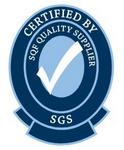Click HERE To Buy Voltaren Online ↓
 Voltaren for Sports Injuries: Is It Effective?
Voltaren for Sports Injuries: Is It Effective?
What Is Voltaren and How Does It Work?
Imagine reaching for relief after a tough practice or an unexpected twist on the field—that’s where Voltaren often comes in. Voltaren, also known by its generic name diclofenac, is a nonsteroidal anti-inflammatory drug (NSAID) widely used as a topical gel to ease pain and reduce swelling.
When applied to the skin over sore muscles or joints, Voltaren works by blocking the production of inflammatory chemicals called prostaglandins. This process targets the pain right at the source and helps athletes regain movement faster.
Athletes appreciate Voltaren because it delivers localized relief without the stomach issues sometimes associated with oral NSAIDs.
| Feature | Description |
|---|---|
| Active Ingredient | Diclofenac |
| Form | Topical Gel |
| Main Benefit | Reduces pain and inflammation at the injury site |
Common Sports Injuries Where Voltaren Is Used

Whether it's the aching muscles from a marathon or the sharp sting of a rolled ankle on the basketball court, active people often reach for voltaren to help manage their pain. This topical medication is particularly popular among athletes dealing with soft tissue injuries. Sprains, strains, and bruises are frequent issues in sports, as sudden movements and repetitive motions can easily stress muscles, ligaments, and tendons.
For example, soccer players might use voltaren to soothe a pulled hamstring, while runners often turn to it for relieving inflammation from shin splints. Even minor joint injuries—like swelling around the knee or elbow—are situations where the gel is frequently encountered in athletic circles. Its targeted application allows for localized relief, helping athletes return to training sooner.
By offering anti-inflammatory action right at the site of discomfort, voltaren appeals to those hoping to minimize downtime. It provides a practical solution that helps manage everyday sports injuries, making it a staple in many gym bags and medical kits.
The Science: Research on Voltaren’s Effectiveness
Clinical studies suggest that Voltaren, which contains diclofenac as its active ingredient, can significantly reduce pain and inflammation in people recovering from sports injuries. Its fast-acting gel formulation allows the medication to be absorbed directly at the site of injury, targeting muscles, tendons, and joints affected by strains or sprains. Research indicates that, when applied regularly, Voltaren offers notable relief from symptoms, often within a matter of days.
Many trials have compared Voltaren to placebo and even oral pain medications, with findings showing it provides similar levels of pain reduction but with fewer risks of systemic side effects. This makes it a popular option among both recreational and professional athletes.
Safety Concerns: Side Effects Athletes Should Know

For many athletes, Voltaren offers much-needed relief to keep moving after an injury. But while it’s easy to focus on the benefits, it’s equally important to consider possible side effects. The most common are skin irritation, redness, or itching where the gel is applied—especially if used under wraps or athletic tape. These reactions are usually mild and fade with time, but persistent discomfort shouldn’t be ignored.
More rarely, people may experience stomach issues like nausea or heartburn if they use Voltaren for long periods or over large body areas. This is because a small amount of the medicine can still be absorbed into the bloodstream. Athletes with sensitive skin, asthma, or a history of allergic reactions should use caution and consult a healthcare professional before starting Voltaren.
Finally, it’s important to remember that Voltaren shouldn’t be used on broken skin or open wounds, no matter how tempting quick pain relief may seem. Using Voltaren responsibly helps avoid complications, ensuring that recovery stays on track and performance isn’t compromised by unexpected setbacks.
Comparing Voltaren to Other Pain Relief Methods
While traditional oral painkillers like ibuprofen and acetaminophen are go-to options for athletes, Voltaren’s topical formula sets it apart. Instead of working systemically, Voltaren gel works at the site of pain, allowing athletes to target sore muscles and joints with minimal impact on the rest of the body. This local application can be especially appealing for those hoping to avoid gastrointestinal side effects.
For quick reference, here’s how Voltaren compares with other popular pain relief methods:
| Method | Application | Common Side Effects |
|---|---|---|
| Voltaren Gel | Topical | Minimal (local skin irritation) |
| Ibuprofen Tablets | Oral | GI discomfort, ulcers |
| Cold/Hot Packs | External | Skin irritation |
Ultimately, choosing between Voltaren and alternatives depends on injury type, personal preferences, and tolerance to side effects. For many in sports recovery, the focused relief provided by Voltaren can offer a significant advantage.
Tips for Using Voltaren Safely during Recovery
Athletes eager to bounce back often reach for Voltaren, but smart recovery is all about caution and precision. Before making it a routine, always consult a healthcare professional—especially if you have chronic health issues, allergies, or are taking other medications. Apply only a thin layer to intact skin, steering clear of broken areas and avoiding excessive use to minimize systemic absorption.
Stay alert to any unusual skin reactions or persistent discomfort and discontinue use if these arise. Combine Voltaren with non-drug strategies like rest, ice, and physical therapy for a well-rounded recovery. Remember, proper dosage and short-term use are key to safe, effective pain management.





















